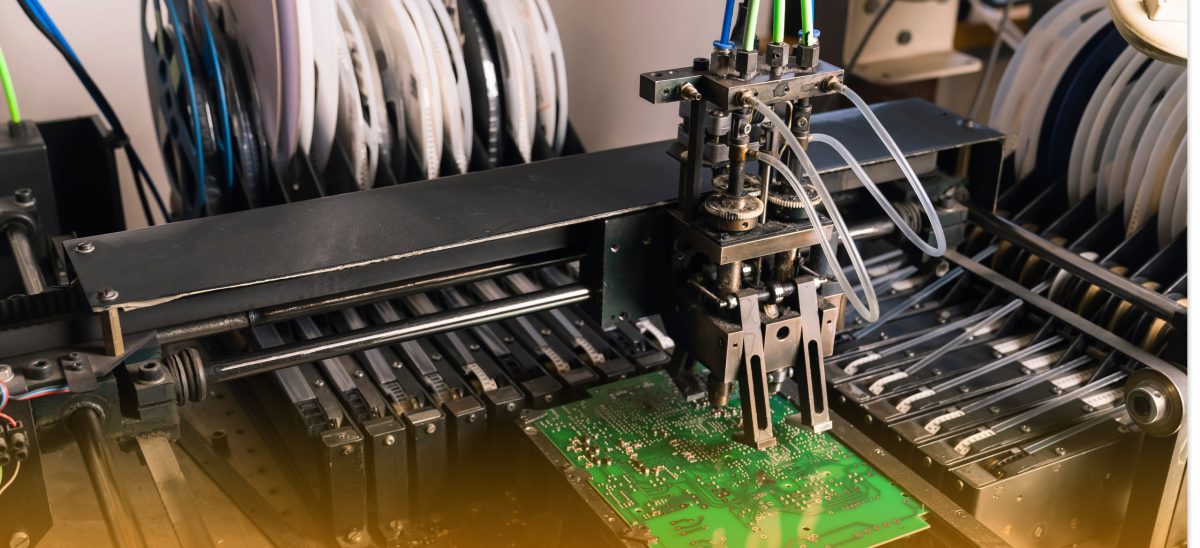Contents
- 1 Reducing PCB Cost–Value PCB Cost and Learn to Reduce
- 2 PCB Cost Reduction Starts from The PCB Design
- 3 How Can You Reduce the PCB Cost of a PCB and Simplify the Manufacturing Process?
- 4 Tips to Save Money during the PCB Manufacturing Process
- 5 Smart Ways to Reduce PCB Assembly Costs
- 6 How WellPCB does to reduce the PCB and Assembly Costs to a reasonable consumer price.
- 7 Reducing PCB Cost–Finding a reliable PCB Supplier.
- 8 Factors Affecting PCB Costs
- 9 10 Tips to Reduce PCB Cost During Manufacturing
- 10 Reducing PCB Cost–Conclusion
Reducing PCB Cost–Value PCB Cost and Learn to Reduce
To anyone interested in WellPCB. We will provide you with a one-stop service and high-quality products.
You can send us the documents you need to make and get a quote immediately! What are we waiting for?
We have ten years of PCB manufacturing experience, and understanding that PCB making can incur some unnecessary costs is the first step towards reducing manufacturing costs.
You will have to understand the value of the PCB itself and adopt the mindset of lowering the PCB cost as much as possible without compromising the printed quality.
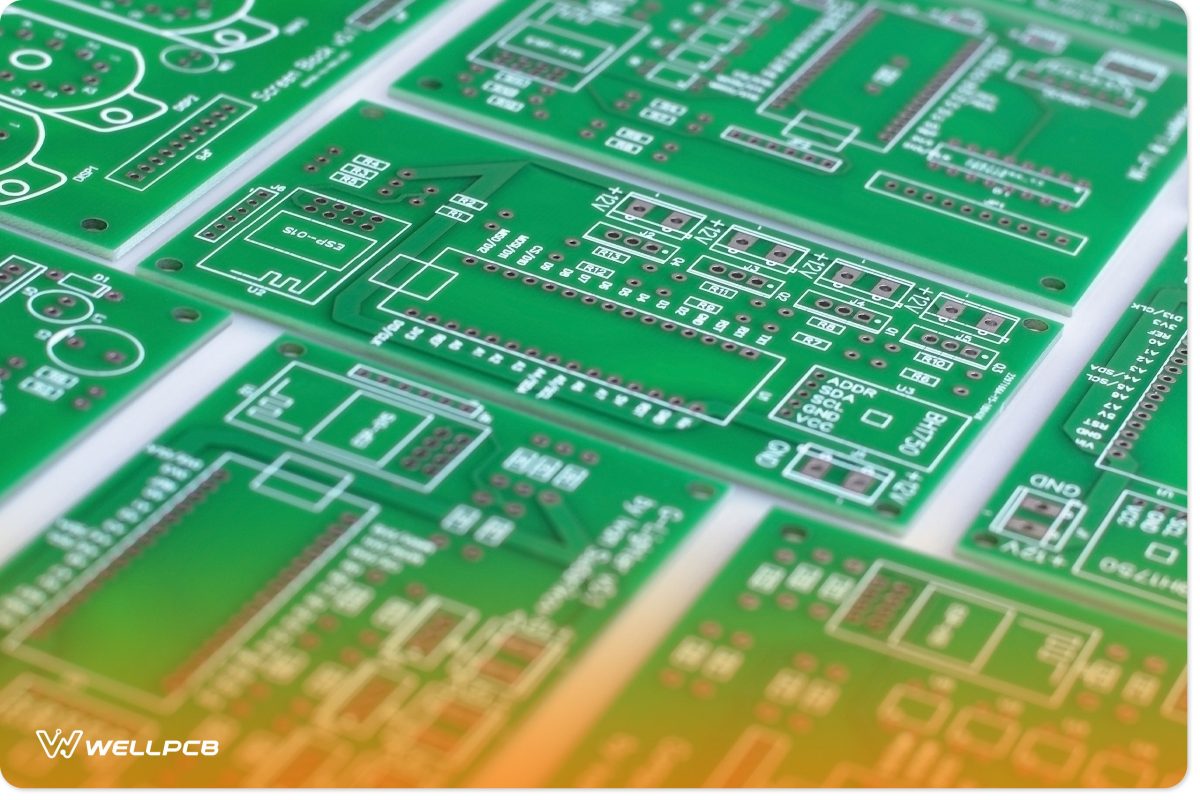
However, PCB manufacturing is a highly labor-intensive industry.
It continually faces stiff competition and regulations. The PCB Manufacture processing itself is driven by many variables that can independently affect the overall board price.
Manufacturers and users control some of the factors that affect cost. However, some elements are beyond the reach of both.
Conditions like exchange rates, utility tariffs, and material costs are among many others.
So, understanding all these factors helps you know the value of the printed circuit board through evaluating the manufacturing process.
Sometimes, however, users can also make decisions that can influence the cost from their side.
The most obvious ways of reducing cost are making the boards as simple as possible, using fewer components, and reducing the board complexity.
At times, you might also consider using basic shapes as much as possible, ordering a large batch quantity, and, of course, using the least expensive service available.
PCB Cost reduction is something that you have to consider from the earliest stages of the board and layout design.
Once the board is printed, factors that can influence cost reduction are limited. Little can be done on a finished product.
In the remaining chapters, I will illustrate some critical factors to consider during board designing, PCB quoting, and assembly stages. We will showcase the factors that affect pricing at these individual stages.
In the preceding chapters, we will outline some of these cost-saving techniques and offer a realization that some factors (we esteem highly) are beyond our control.
With this realization, it will be possible to achieve an aggressive PCB price with little or no compromise to the final product’s overall performance (s).
PCB Cost Reduction Starts from The PCB Design
A good design is everything. A great product is easy to predict with excellent product design.
In PCB manufacturing, the first process of cost reduction is the PCB design itself. The more optimized a PCB design is, the better the chances of a reduced PCB cost.
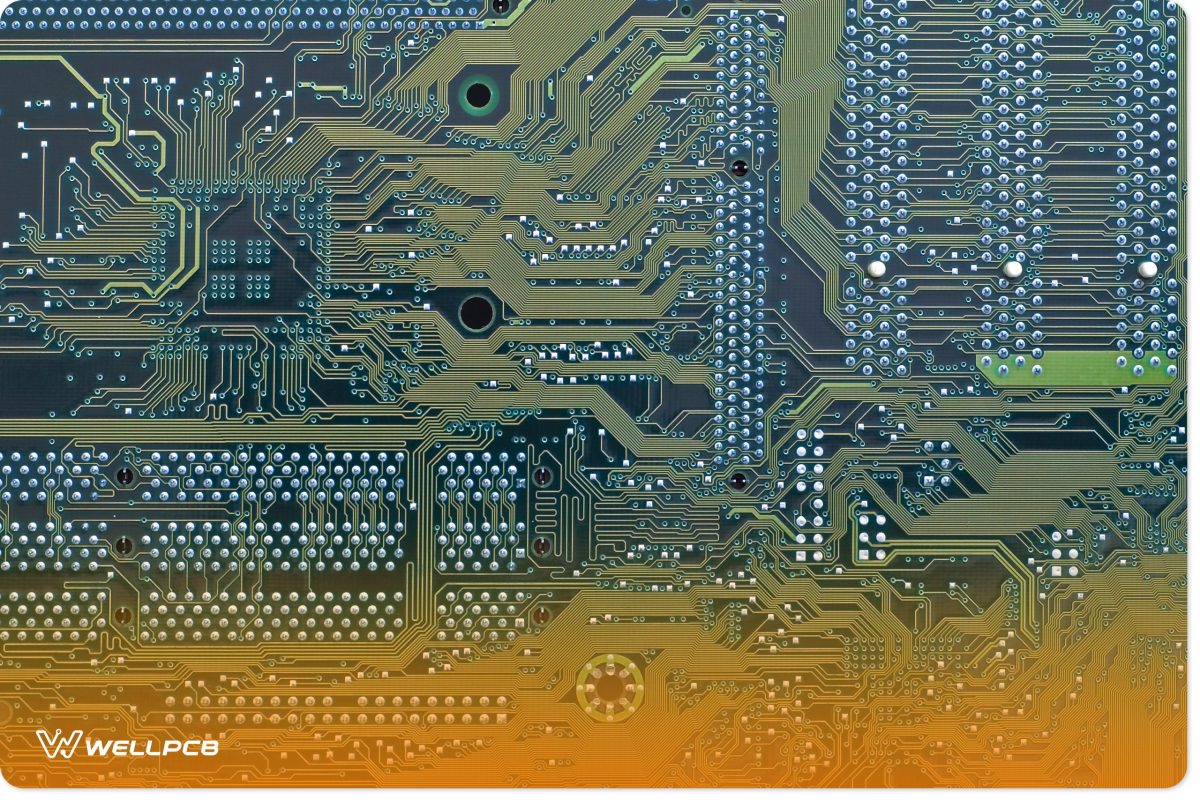
When beginning a PCB design, it is best to have a clear idea of the final idea.
This pre-knowledge will significantly help you to figure out the parts you will need for the design.
An excellent way to avoid this issue is to look at similar products (especially the open-source versions). This will accelerate the time to deliver and reduce the likelihood of costly production mistakes.
Next, you will have to consider whether to use through-hole or surface-mount components. Making this decision early enough would significantly minimize your PCB production cost.
Using through-hole vias as much as possible rather than laser vias or buried vias makes PCB production cheaper than using HDI technology.
For the through-hole pads and vias, it is best to keep the annular ring at a minimum. The call covers the minimum distance between the pad’s border and the holes’ border. It needs to be uniform throughout the board designing process.
The choice and usage of vias (including buried vias, blind vias, or even micro-vias) in a board improves a circuit’s interconnectivity. It also achieves this by condensing the minimum space possible but increasing the cost as much.
Basically, with more vias comes a higher price.
This pricing remains high despite the size of the hole diameters.
The board layers’ layout is another aspect that can help to reduce the cost of the board. PCB cost increases with the addition of layer count. The addition of more layers onto the circuit board amplifies the expense of printing the circuit board.
A simple 50 by 50 mm PCB using two layers and standard layers might cost around $16.
However, if the board is redesigned to use only one layer, the cost of production will decrease to about $10 on WellPCB.
The change from a two-layer to a single-layer alone brings down the price by $6.
Picking the suitable footprint during the design stage will save in design cost and lead time. On the other hand, using the wrong impression might delay board production significantly.
Let us now illustrate other saving techniques and optimizing the board design for PCB manufacturing and PCB Assembly.
How Can You Reduce the PCB Cost of a PCB and Simplify the Manufacturing Process?
Reducing the PCB cost of a printed circuit board can also simplify the manufacturing process. You can employ some practices to streamline the printed circuit board manufacturing process, reduce cost, and improve lead time.
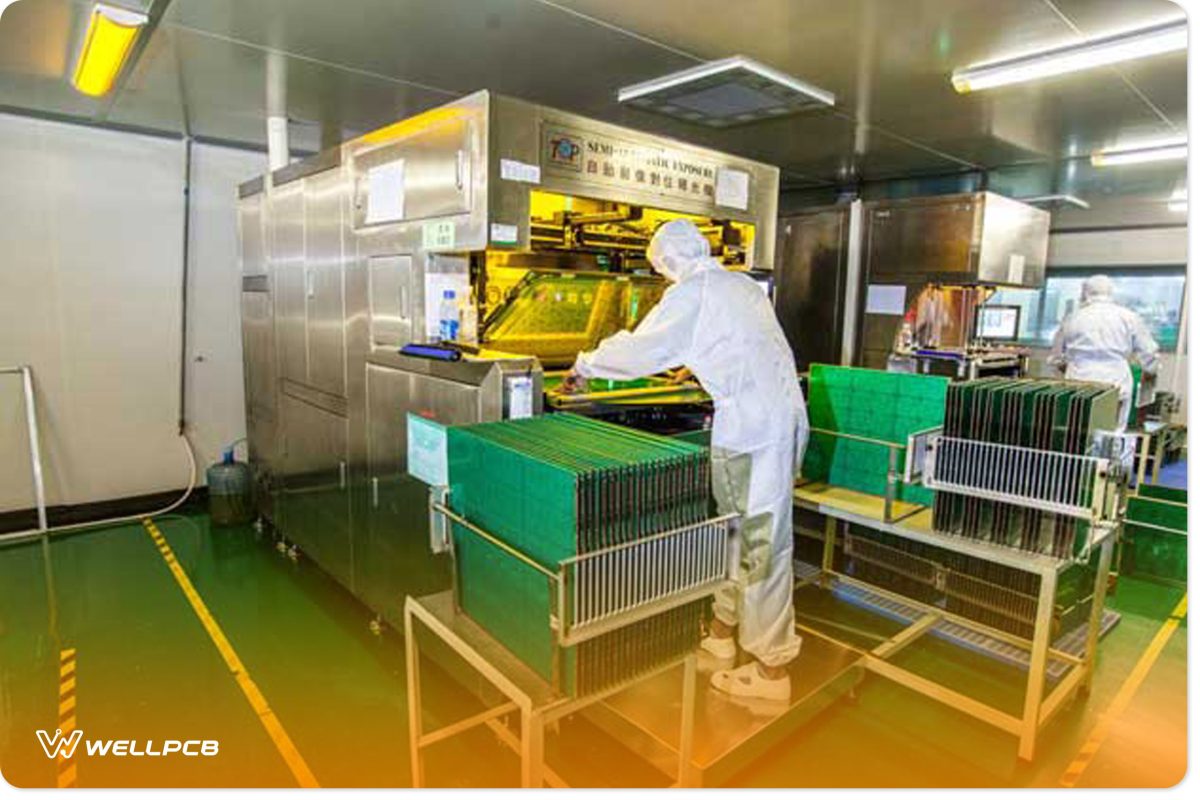
Here are some cost reduction techniques to consider when targeting cost reduction:
Material Type
The choice of a PCB material is an essential part of the WellPCB. It determines the board’s performance, durability, and even scope of application.
We will provide you with a one-stop service and high-quality products. You can send us the documents you need to make and get a quote immediately!
What are we waiting for? We have ten years of experience in the PCB manufacturing process.
Therefore, it is necessary to consider the material’s performance regarding temperature resistance, tensile strength, flexibility, dielectric constant, and many other relevant factors.
FR-4 is the most commonly used material in PCBs. FR-4 is ideal for most applications, but we have other materials that tolerate different temperatures yet are graded within FR-4.
Going for the FR4-TG150, for instance, would cause an increment of about 5% of the total pricing, while FR4-TG175 will add a 10% increase in overall manufacturing cost.
Complex Shape
A complex board shape is likely to increase the cost of using simple forms like a square or rectangle.
In the hopes of making the final product look unique or different (which might not necessarily influence anything), product designers end up creating complicated shapes for their PCB boards. These shapes demand the use of equipment with more precision and additional cost overheads.
Board Size
It is apparent here: the more significant the board size, the more the cost of production. It is that simple.
Reducing PCB Cost—Board Complexity
When designing a printed circuit board layout, it is better to have proper clearance rather than some tedious and tricky plan. The argument here is simple: anything complex would require some unique and precise equipment to handle them.
Moreover, board manufacturers usually have minimum clearance requirements that PCB designers should follow to avoid additional charges.
Special Board Design (Cuts & Slots)
Some boards require unique interior designs. Such designs include making cuts properly to fit a device casing (or any other reason that could justify using such amounts).
However, there are some cases where board designers (in the hope of creating something unique) add some cuts inside their PCB without any importance to the final product besides looking cool.
Such unnecessary cuts can sometimes increase the cost of producing a PCB highly. Thus, it is advisable to keep the design of the board as simple as possible.
Reducing PCB Cost—Holes and Rings
During a PCB design, things like rings and holes might be needed for the board. Always, spots and circles should be designed to fit the board yet remain as large as possible.
Bigger hole diameters are preferable to the correct PCB service provider. Thankfully, there are various PCB manufacturing as they require less precision during fabrication.
Smaller holes and rings usually need more control and precision to achieve. These factors demand specialized equipment that will, in turn, drive the PCB production costs higher.
Most Manufacturers already have set working standards for board designers to follow. These size ranges set up by the manufacturers are to ensure that users do not incur more spending during board production.
In the next chapter, I will mention some key points to help save money during the WellPCB. We have ten years of PCB manufacturing.
We will provide you with a one-stop service and high-quality products. You can send us the documents you need to make and get a quote immediately!
What are we waiting for?
Tips to Save Money during the PCB Manufacturing Process
After discussing some essential techniques that can be applied when printing circuit designs to save PCB costs, We considered showcasing a few tips to keep the cost of printing PCBs in the manufacturing stages.
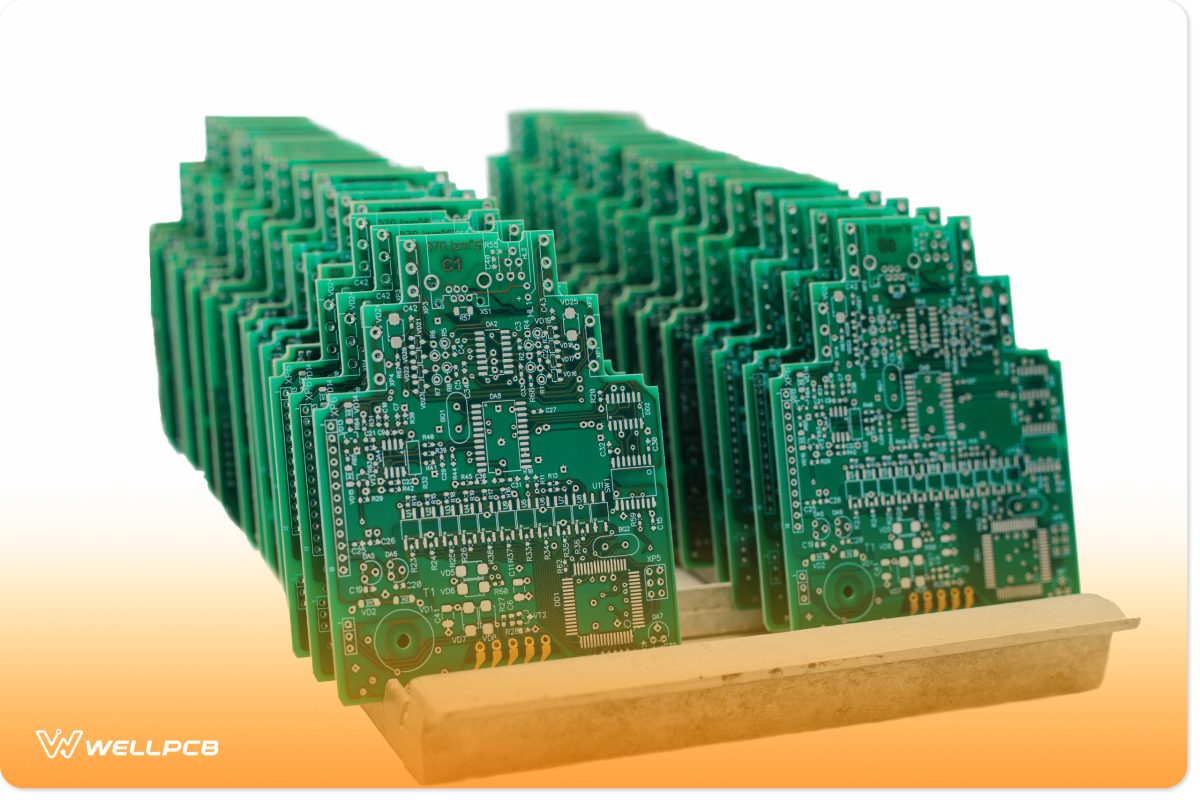
In this chapter, I will highlight some things during WellPCB. We will provide you with a one-stop service and high-quality products. You can send us the documents you need to make and get a quote immediately! What are we waiting for? We have ten years of PCB manufacturing that stage can help you in saving funds.
Reducing PCB Cost—Going for Large Batches
A basic economic rule: the volume of a community dramatically affects the price of each commodity. The more popular a product is, the lower the cost of producing the product. It applies in the PCB industry as well. The higher the volume, the lesser the cost of manufacturing each printed circuit board and assembly.
For example, if you order five units of a basic 50mm by 50mm 2 layer, it will give a total cost of $15.12, excluding shipping, at a rate of $3.024 per unit. Changing the number of units you ordered to about 20 units provides a total cost of $20.16 for $1.008 per unit, a massive saving in production.
Board Surface Finish
The board surface finish is one of the most critical aspects of the PCB. It dramatically determines the performance and durability of aboard.
The board surface finish prevents pads from oxidizing. It also enhances better ability to solder and increases conductivity. Currently, we have different types of surface finish that can be applied to a board during manufacturing.
Think about board surface finish as traveling to a destination with several ways of getting to the target. You can decide to fly a private jet and have total comfort in the air world. Fly a commercial plane, follow public transport systems like a train or bus, drive your average car, or go the luxury car route. Depending on the form of transportation used at the end, one will still get to the destination but at different states of time and comfort.
Such a scenario is similar to the surface finish. All surface finish types will achieve the same fundamental goal, but all come in different techniques, methods, lifespans, and features.
A PCB board using a standard HASL Lead-Free surface finish that costs around $20 may require about 20-30 dollars above the typical cost.
In the end, it all boils down to the product requirement. HASL is a minor expensive finish; however, HASL does not produce flat PCBs for the assembly of modern BGA, CSP, and MLF packages.
Reducing PCB Cost—Panelization
By adopting onboard panelization, you could save a few bucks. For instance, when printed circuit boards are framed into panels, they produce PCBs that work faster and better. They also waste fewer PCB materials, and they decrease the lead time.
During the manufacturing process, the points highlighted above would help save costs and improve manufacturing lead time.
PCB Assembly cost. Sometimes, you might decide to go for a printed circuit board assembly from the supplier. How should you go about it? The next chapter highlights some clever ways you can employ to reduce the Bill Of Materials (BOM) of a PCB to be fitted onto the board.
Smart Ways to Reduce PCB Assembly Costs
The Bill Of Materials (BOM) of a PCB gets fitted aboard. PCB Assembly involves auto-populating a printed circuit board with its needed components and parts.
This will make it easy for a pick-and-place machine to easily pick and place the details on the PCB (PCB Assembly is usually costly when ordered for small batches compared to large sets. SMT).
Board assemblies get drastic price changes during large volume production of boards.
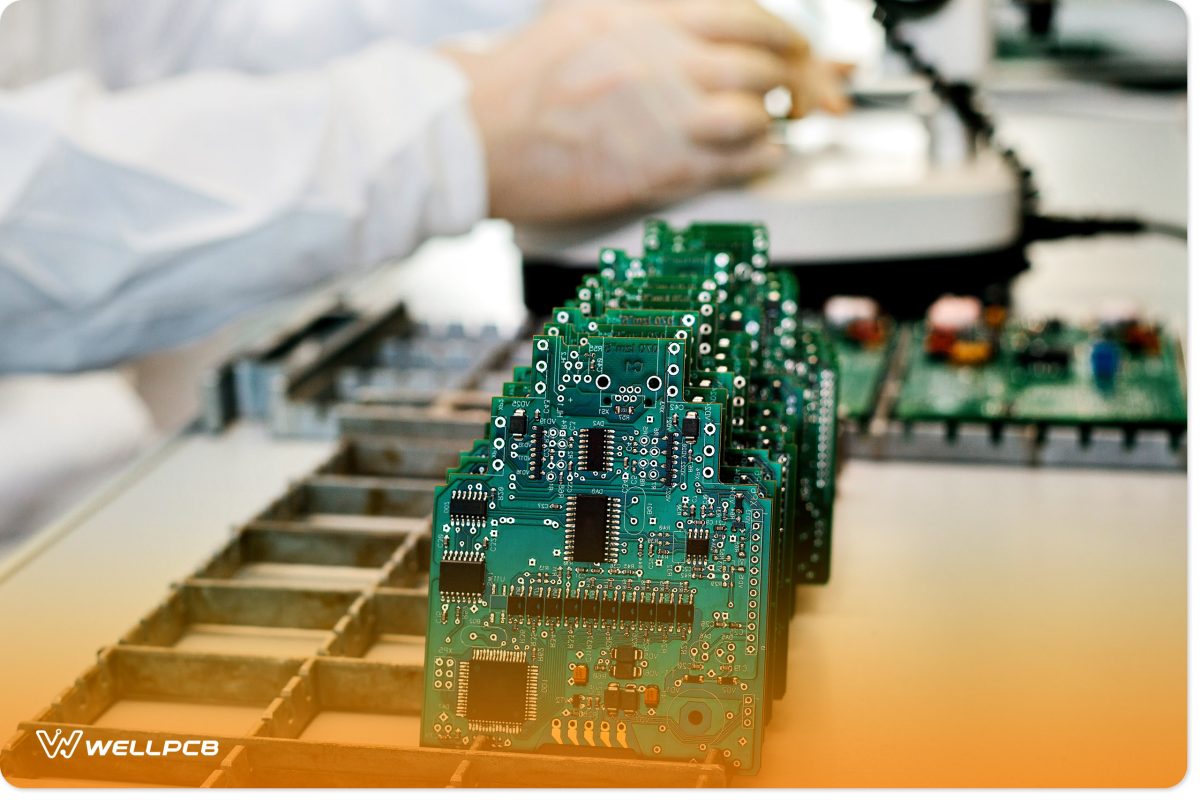
A single board assembly can cost as much as $300, depending on the board parts, while 100s of the same order might cost around $450.
This will make it easy for a pick-and-place machine to easily pick and place the components on the PCB (PCB assembly way: don’t do small units like five or ten; make it range between hundreds and thousands).
So, should you choose to go to the SMT?
Smaller device sizes during PCB manufacturing might save the production cost.
This will make it easy for a pick-and-place machine to easily pick and place the components on the PCB (PCB Assembly. But they add more complexity during the SMT).
When a board is too small, it will make details all packed together, making it harder to assemble the parts on the board.
Smaller Board Sizes might reduce the PCB manufacturing cost, but they could also make the board design quite complicated.
Such complications would increase the value of assembly because of the precision equipment needed during assembly.
Clearance of a board might not fully impact the cost of the PCBs as it will impact the board’s assembly cost.
A small and congested board clearance would require more time and manufacturing resources during assembly.
The placement of polarized components is similarly a vital consideration.
The post should only feature two-orientation (maximum) for the assembly machine to lessen the time spent on attaching components aboard.
Improper documentation of the BOM (Bill of Materials) can also incur extra costs due to misinterpretation.
For example, most components on an SMT). This will make it easy for a pick-and-place machine to easily pick and place the details on the PCB (PCB assembly is fitted to the board’s top side. But there are cases where some parts get mounted to the bottom side.
If the BOM does not state the side a component goes to, a simple error could cause an element to be attached to the wrong side, which could result in additional reworking costs.
Reliance on a PCB assembler could also cut down the cost of production, as PCBs will be priced for large-scale production.
But if you are limited to individual supply, it is best to have multiple component sources. With various sources, one gets better cost leverage and availability.
In regards to components used, the unique components count is significant because it directly influences the overall cost.
The more unique components you have, the more value you have. The individual component count is the number of BOM line items.
For example, a Printed Circuit Board Assembly) is presented after the entire parts and components get soldered and rightfully installed.
Reducing those individual components to 20 components count will cost about $248 (a reduction of about $47).
A PCBA service for 50 quantities with about 30 unique details should cost around $295.
Need to know about ordering custom PCB Circuit boards online.
For the PCB board you need, you can contact us at WellPCB is a PCB manufacturer that offers Printed Circuit Board Assembly) It is a board presented after the entire parts and components get soldered and rightfully installed.
A PCBA service on-site seamlessly integrates these two functions and keeps responsibility for the quality of the product with a single supplier.
In the next chapter, we will discuss how to reduce costs through the assembly process.
How WellPCB does to reduce the PCB and Assembly Costs to a reasonable consumer price.
In the previous chapters, we highlighted ways that can help you to reduce the cost of printed circuit manufacturing during assembly.
Often, a reputable manufacturer can help you incorporate some reduction techniques during the manufacturing process to lower consumer prices.
As a PCB manufacturing technology and experience, assisting many customers in solving problems.
WELLPCB, we take pride in such acts to our clients.
If you are interested, you can visit our homepage.
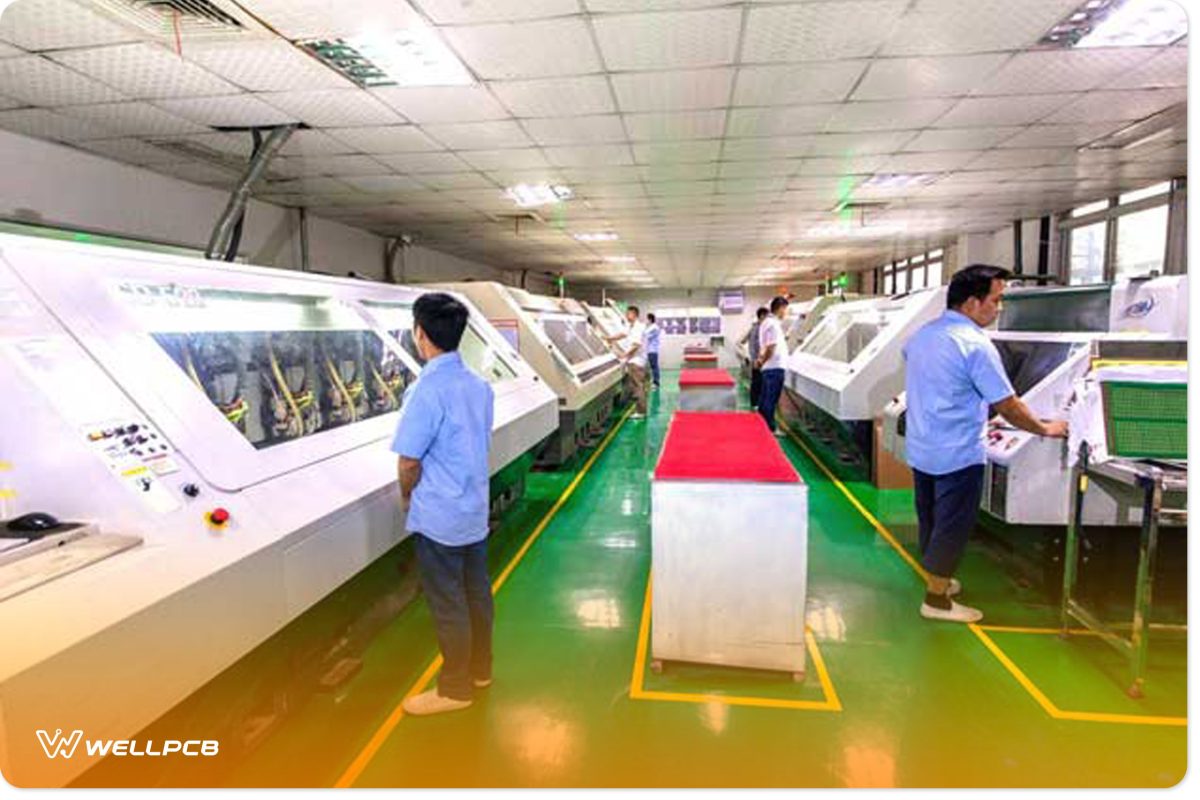
WellPCB reduces production costs by manufacturing and delivering directly from our factory. In so doing, we cut out any middlemen like agents or distribution agencies. This nature of operation cuts on lead time for our customers’ orders.
WellPCB also offers a general low-cost PCB fabrication for prototypes compared to other competing PCB manufacturers and assembly accompanies.
Thanks to our improved pass rate and efficiency in making PCBs, we can cut the cost of both small and large quantity orders.
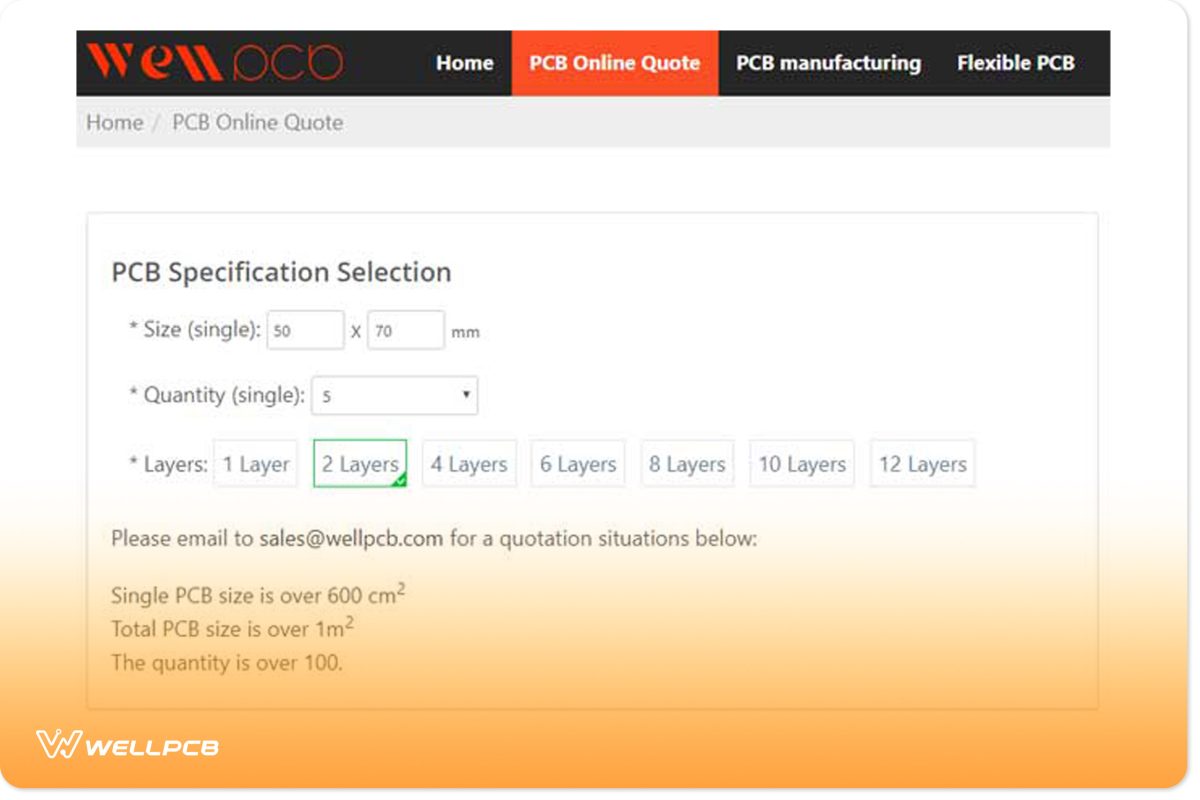
Tools like a cost estimator are available on the WellPCB website to give our prospective customers a clear picture of the cost implication of their PCB projects. A client can also know what options are enabled or disabled to save them from unnecessary expenses.
Reducing PCB Cost–Finding a reliable PCB Supplier.
As a beginner, finding a PCB manufacturer is hard; finding a reliable one is even more challenging.
From experience, finding a reliable supplier would involve careful internet research of PCB manufacturers.
It might also involve attending electronics trade shows and traveling to China, among other such acts.
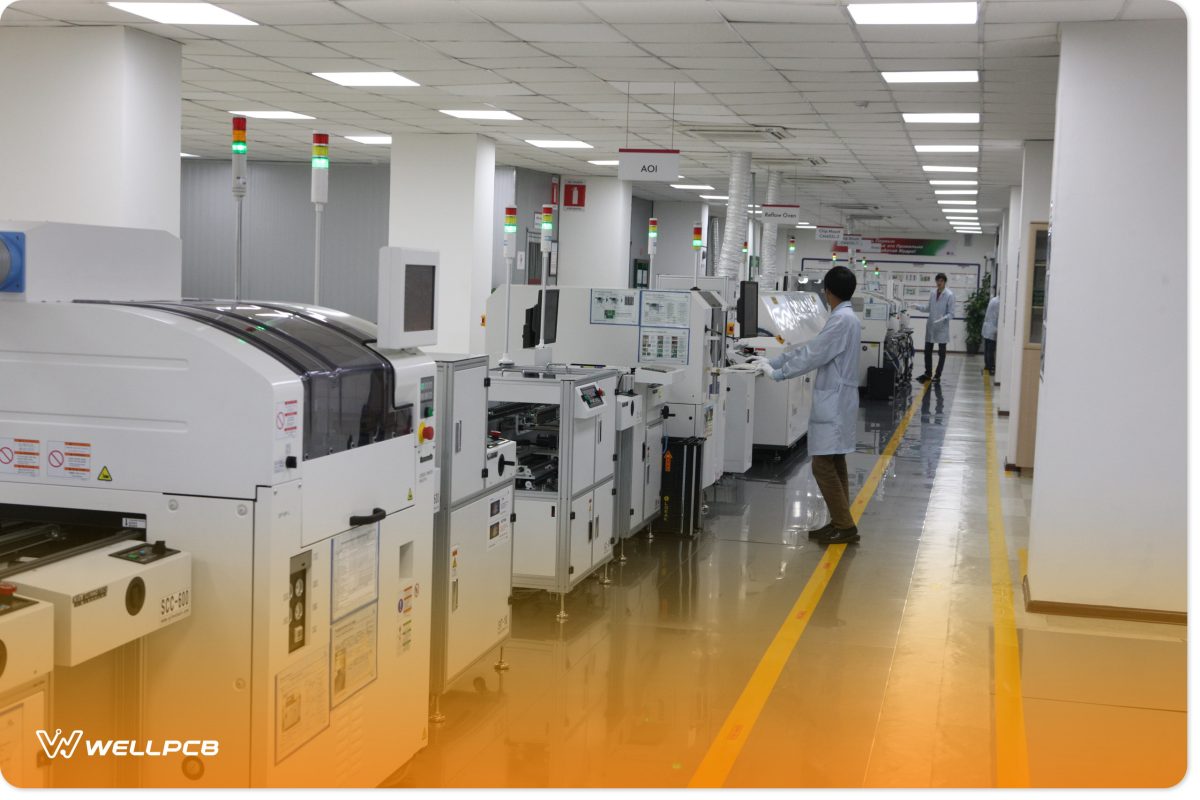
After finding a viable PCB supplier, checking their reliability might involve finding out their reviews. It is an act of digging a little deep to see the content they publish and asking for factory images.
As WellPCB, we have consistently strived to remain a trusted PCB and PCB Rapid Prototyping. 3D PCB Printing makes the PCB and does the Printed Circuit Board Assembly (PCBA supplier that you can work with and trust for your manufacturing works.
Factors Affecting PCB Costs
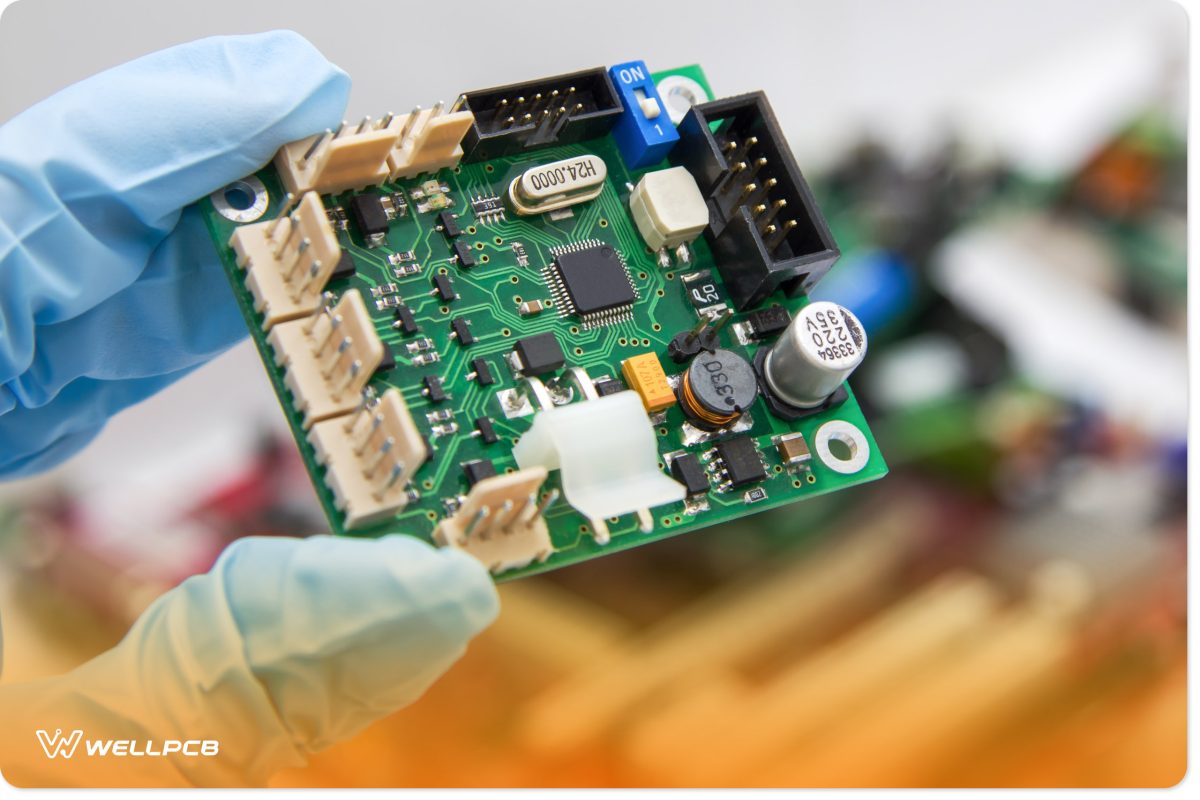
Hand holding a PCB
PCB prices can range between 50 cents and $300 depending on several factors, including:
Material Choice
Printed circuit boards have varied composite materials that you can use. The material choice may vary depending on budget, desired performance characteristics, and intended application.
Board Size
Size determines the amount of materials and time needed to design a PCB. Larger circuit boards require more materials and time to produce, which increases their cost.
Layer Amount
Increasing the number of PCB layers would mean more materials used, more steps in the production, and more time spent designing it. That said, more layers will increase the cost, but adding a layer doesn’t double the cost.
Vias
Vias are electrical components between the layers of PCB, designed to facilitate routing, connection, power distribution, and thermal management. The more vias you use, the more likely your circuit board production cost will increase.
Relays
Relays in a PCB are electronic switches that enable it and the device to function properly. If the circuit board requires more relays, you will have to design it to accommodate more power.
Silkscreen
Silkscreens are layers of ink traces used in a PCB to identify its components, including warning symbols, marks, test points, and more.
Including a more detailed silkscreen in your circuit board will likely increase the cost of production.
Electronic Components
When designing a PCB, it will help if you use fewer electronic components. Using fewer components will reduce the cost.
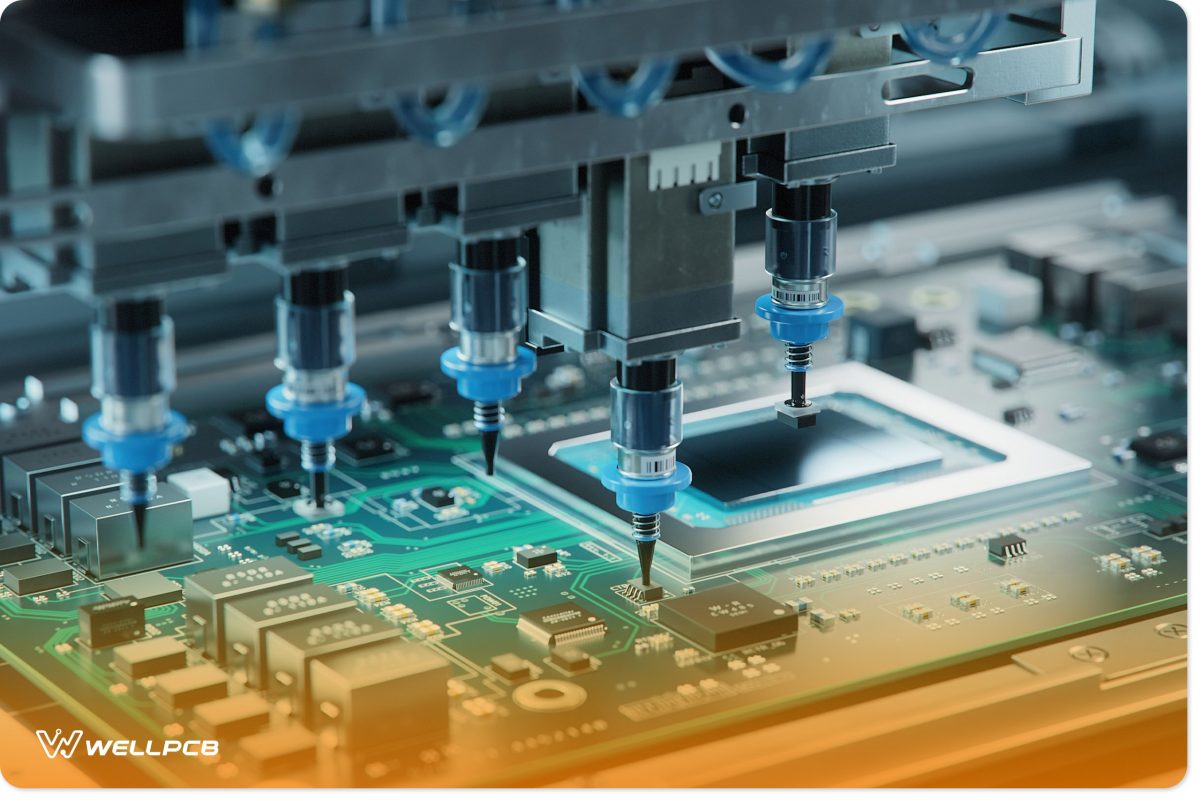
Automatic pick and place machine installing PCB components
Test
You must test the circuit boards to ensure you ship sufficient and reliable products. Advance and additional tests such as in-circuit testing, flying probes, or automated optical inspection may add to the cost of production.
Labor
The kind of labor you employ will also determine the cost of the circuit board manufacturing. Picking highly skilled labor likely increases the cost of production.
Expected Turnaround Time
This is the time required for a PCB manufacturing process to be completed in a way that satisfies the buyer’s request.
If the buyer orders the circuit board to be ready within a short time, you will have to hire more laborers and this will increase the cost of production.
Quantity
PCB manufacturing has a fixed price per square inch for every quantity ordered. Large quantity orders reduce the cost per unit due to economies of scale.

A batch of produced PCBs
10 Tips to Reduce PCB Cost During Manufacturing
Cost reduction is something you have to consider as a PCB designer. Here are the tips to reduce PCB prices during manufacturing.
- Have a clear idea of the final product
- If possible, you can reduce the layer counts
- Ensure you accurately size the holes and rings
- Acquire quality materials for PCB designing
- Your board size should be at a minimum
- Stick with standard board thickness and shape
- Use the right type of vias
- Opt for a more affordable finish
- Ensure all the circuit boards are in panel format
- Go for large batches
Reducing PCB Cost–Conclusion
When considering the tips highlighted, it is also good to take note of the device’s quality. Sacrificing quality over cost might be expensive in the long run due to returns from your consumers. It is advisable to strike a balance between both factors.
In summary, saving cost in PCB manufacturing and assembly is easy with this simple rule – if it’s not needed, don’t add it.
If you have questions on any of these methods (if you need engineering help to make sure your PCBs are better priced), don’t scratch your head too much; reach out to WELLPCB. We will guide you through and ensure your project succeeds.
Get started by creating your low-cost PCB and PCB Rapid Prototyping. 3D PCB Printing makes the PCB and does the Printed Circuit Board Assembly (PCBA today.
